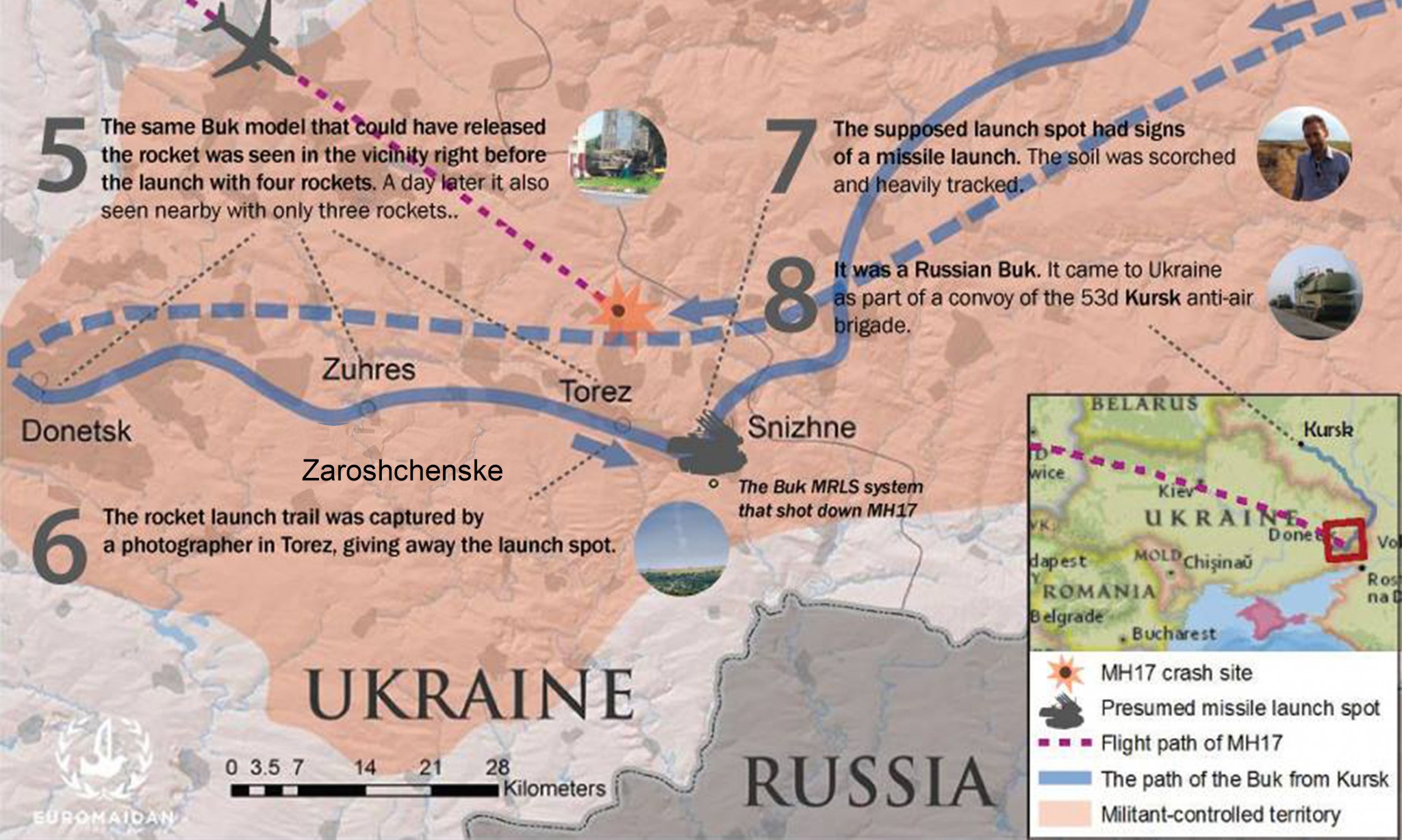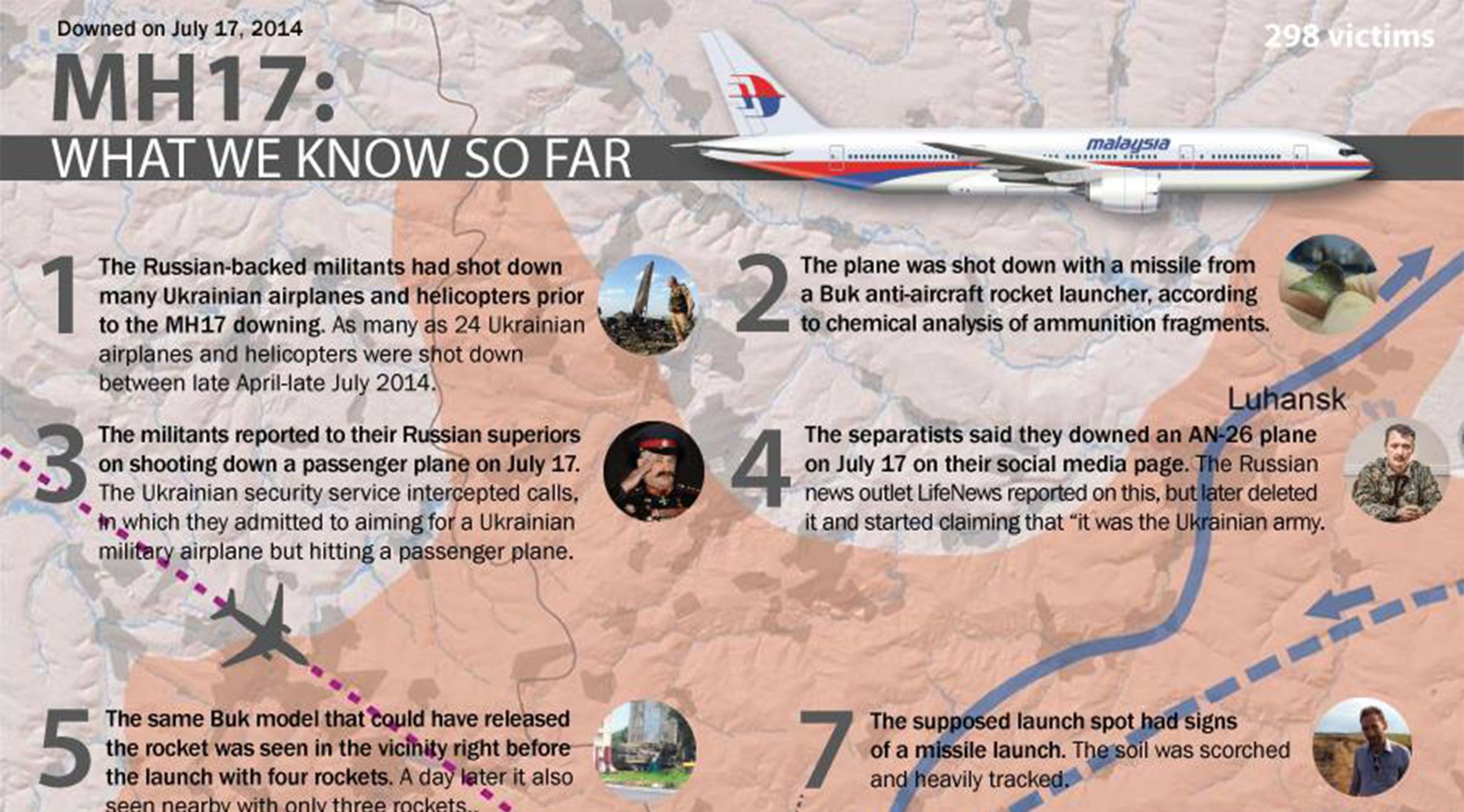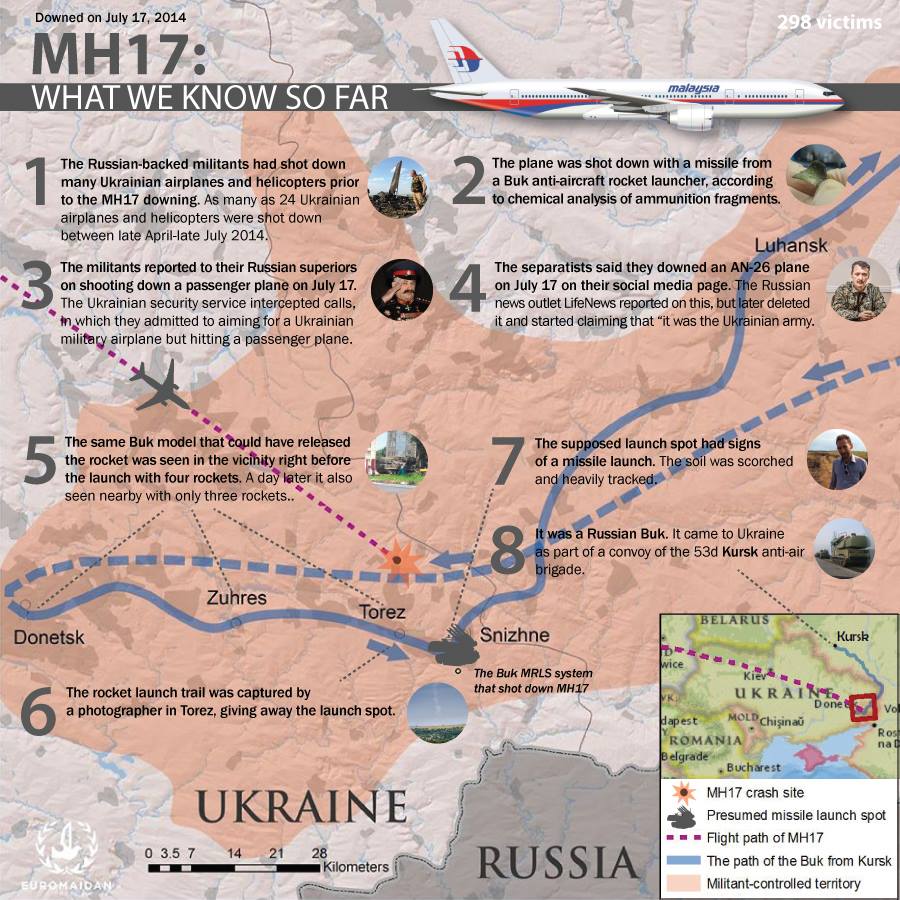Available in German. On 17 July 2014, the Malaysia Airlines Flight 17 was shot down above militant-controlled territory in East Ukraine, killing 298 people on board. A Dutch-led joint investigation team is compiling a report on the causes of the tragedy that is to be released in October 2015, but the draft version already sees Russian-backed militants as being responsible for shooting down flight MH17, according to CNN. Meanwhile, independent investigators have been doing their own research while Russian officials and media have been spawning multiple contradicting versions of events. Here is a roundup of what we know about the tragedy.
What we know happened
1. The Russian-backed militants had shot down many Ukrainian airplanes and helicopters prior to the MH17 downing. As many as 24 Ukrainian airplanes were shot down by anti-Ukrainian troops between late April-late July 2014.
Russian-backed militants have been shooting down lots of Ukrainian airplanes and helicopters prior to the downing of the Malaysian flight. At least 10 (and, by some estimates, 24) military airplanes and helicopters had been shot down prior to MH17. Just six days after the MH17 crash, on July 23, two more planes were shot down above Ukraine.
2. The plane was shot down with a missile from a Buk anti-aircraft rocket launcher, according to chemical analysis of ammunition fragments.
Chemical analysis of shrapnel collected at the crash site reveals that it came from a Buk missile. These results were endorsed by German rocket scientists and international experts.
3. The militants reported to their Russian superiors on shooting down a passenger plane on July 17. The Ukrainian security service intercepted calls, in which they admitted to aiming for a Ukrainian military airplane but hitting a passenger plane.
Calls intercepted by Ukraine’s Security Service reveal that the Russian-backed militants possessed the Buk that was capable of releasing the missile and were making plans to down more Ukrainian planes.
Another intercept by the Security Service reveals a conversation between a militant involved in shooting down the plane and Kozitsyn, a General of the Russian army. The militant clearly reports to his superior that they shot down a civilian plane.
4. The separatists said they downed an AN-26 plane on July 17 on their social media page. The Russian news outlet LifeNews reported on this, but later deleted it and started claiming that “it was the Ukrainian army”.
A pro-separatist social media page on VKontakte promptly reported shooting down a Ukrainian military plane AN26 on July 17, with the Russian outlet LifeNews reporting on the story. Both the social media post and the news report were removed shortly, and the same LifeNews host announced that it was the Ukrainian military that shot down MH17.
5. The same Buk model that could have released the rocket was seen in the vicinity right before the launch with four rockets. A day later it also seen nearby with only three rockets.
The Buk that could have made the launch was spotted in Donetsk, Zuhres, Torez and Snizhne on July 17 with four rockets, and Luhansk on July 18, but missing one rocket.
6. The rocket launch trail was captured by a photographer in Torez, giving away the launch spot.
A local photographer from Torez captured the rocket trail from the launch of the rocket coming from south of Snizhne, giving away the likely launch spot.
7. The supposed launch spot had signs of a missile launch. The soil was scorched and heavily tracked.
Roland Oliphant, a reporter for The Telegraph, went to the possible rocket launch site south of Snizhne and found that a part of the field was scorched and was heavily tracked.
8. It was a Russian Buk. It came to Ukraine as part of a convoy of the 53d Kursk anti-air brigade.
The Buk can be traced back to Russia. According to the results of investigations by Bellingcat and Correct!v, the Buk was part of a Russian convoy of vehicles of the Russian 53rd Kursk anti-air brigade, which was heading to the Ukrainian border in late June
What we know didn’t happen
Meanwhile, the Russians have been producing multiple stories in an attempt to blame the Ukrainian government for the downing. However, many of them were easily debunked:
9. Mh-17 was not shot down by a Su-25 fighter jet of the Ukrainian military. The Su-25 isn’t capable of doing that.
The Russians claimed that MH-17 was shot down by a Su-25 fighter jet of the Ukrainian military. However, the chief constructor of the Su-25 said it’s not capable of doing that.
10. It was not a Ukrainian Buk. There were no Ukrainian Buks in that area.
Attempting to blame Ukraine for shooting down MH17, the Russian MoD published satellite images that purportedly showed Ukrainian Buks in Zaroshchenske, within the MH17 shooting range. Asrevealed by a bellingcat investigation comparing the images to other available satellite imagery, these images were faked and there were no Ukrainian Buks in Zaroshchenske.
11. There is no way the missile could have been fired from Ukrainian territory. Russian versions that the Ukrainian army shot down MH17 from Zaroshchenske wasn’t controlled by Ukraine on that day.
Zaroshchenske, the alternative to Snizhne launch site where, according to Russian claims, the Ukrainian Buk could have shot down MH17, was actually under militant control on July 2014.

Also, Bellingcat’s sattelite imagery analysis puts pro-Russian positions all around the alleged launch site.
[hr]Written by Alya Shandra, with research by Kirill Mikhailov and the Euromaidan Press team, design by Ganna Naronina






